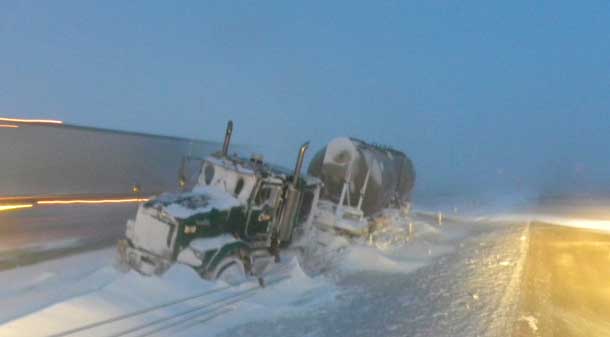Thunder Bay – LIVING – Drive to arrive alive. With winter weather in the region, and icy and slippery roads along with each snowfall, taking the time to ensure your travel is safer only makes sense.
Here is a short list of winter driving tips that can help you and your passengers have a safe trip:
- Ensure all windows, side mirrors and lights are properly and completely cleared of snow
- Help others see you, make sure your lights are turned on
- Reduce your speed and give yourself more time to slow and stop
- Listen to the radio or check 511 on Twitter for updated road and weather reports
- Plan extra time to get to your destination
- Be prepared for changing road and weather conditions. Pack blankets or a winter survival kit, especially if you are planning a trip outside of town.
The Canada Safety Council offers a longer list:
Step 1: Make sure that your vehicle is prepared for winter driving.
- Winter tires are a good option, as they will provide greater traction under snowy or icy conditions.
- Keep a snow brush/scraper in your car, along with possible emergency items such as a lightweight shovel, battery jumper cables, and a flashlight.
- Make sure that mirrors, all windows, and the top of your vehicle, are free of snow or frost before getting onto the road.
Step 2: Drive smoothly and slowly
- Don’t make any abrupt turns or stops when driving. Doing so will often cause your vehicle to lose control and skid.
- Driving too quickly is the main cause of winter collisions. Be sure to drive slowly and carefully on snow and ice covered roads.
Step 3: Don’t tailgate.
- Tailgating becomes much worse in winter weather. Stopping takes much longer on snowy and icy roads than on dry pavement, so be sure to leave enough room between your vehicle and the one in front of you.
Step 4: Brake before making turns.
- Brake slowly to reduce speed before entering turns. Once you have rounded the corner you can accelerate again.
Step 5: Learn how to control skids.
- When skidding, you actually need to go against your natural instincts and turn into the skid and accelerate. Doing so transfers your vehicle’s weight from the front to the rear and often helps vehicles to regain control.
Step 6: Lights On.
- Turn on your lights to increase your visibility to other motorists.
Step 7: No Cruise Control.
- Never use cruise control if conditions are snowy, icy, or wet, because if your car hydroplanes, your car will try to accelerate and you may lose control of your vehicle.
Step 8: Don’t “pump” the brakes.
- If your vehicle is equipped with an anti-lock braking system (ABS), do not “pump” the brakes. Apply constant pressure and let the system do its work.
Step 9: Pay attention.
- Manoeuvres are more difficult to make in the snow. Be sure to anticipate what your next move is going to be to give yourself lots of room for turns and stopping.

